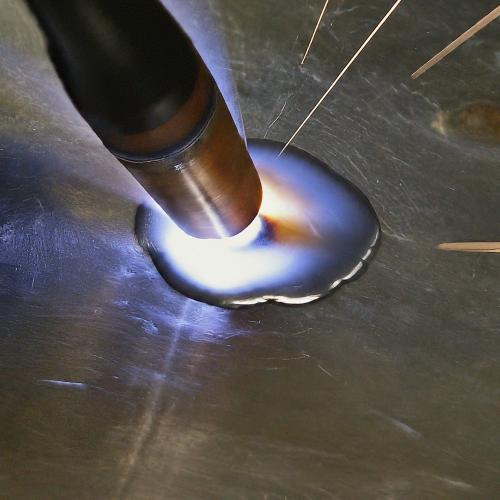What is the Best Weld for Aluminum?

Aluminum, due to its lightweight strength and corrosion resistance, has become a cornerstone material in countless industries. From sleek aircraft fuselages to intricate bicycle components, aluminum's versatility shines. However working with aluminum presents unique challenges, particularly when joining pieces together called the welding process. Unlike its ferrous cousin, steel, welding aluminum requires specific welding techniques to achieve a strong and lasting bond.
This article discusses aluminum welding, exploring the most common methods and their advantages for various applications. We'll also discuss the unique properties of aluminum that necessitate specialized approaches. Hiring a mobile welding service offers numerous advantages compared to welding shops near me, especially for projects requiring aluminum welding on-site.
Understanding the Challenge in Aluminum Welding
Aluminum's desirable qualities – low weight and high corrosion resistance – come with a trade-off during welding. Here's why traditional techniques used for steel might not be ideal for aluminum:
High Thermal Conductivity: Aluminum conducts heat very efficiently. This means a concentrated heat source, like a welding arc, can quickly melt a large area, leading to warping and burn-through.
Refractory Oxide Layer: Aluminum readily forms a thin, invisible layer of aluminum oxide on its surface. This oxide layer has a high melting point and interferes with the welding process, preventing proper penetration.
What Type of Welding Is Used for Aluminum?
Several welding methods have been developed to overcome the challenges posed by aluminum's properties. Below are the three most prominent techniques:
1. Gas Tungsten Arc Welding (GTAW) - Welding with Precision
Often known as Tungsten Inert Gas (TIG) welding, GTAW is a popular choice for aluminum due to its precision and control. Here's how it works
The Process: A non-consumable tungsten electrode creates an intense arc that melts the base metal and filler rod (if needed). The inert gas, usually argon, shields the molten metal from contamination.
Advantages: TIG welding offers excellent control over heat input, minimizing warping and burn-through. It produces clean, high-quality welds with minimal spatter. TIG is ideal for thin aluminum sheets and intricate work.
Disadvantages: This technique requires a high level of skill and dexterity from the welder. It's also slower than some other methods.
2. Gas Metal Arc Welding (GMAW) - Where Speed Matter
GMAW, best known as Metal Inert Gas (MIG) welding, is a faster alternative to TIG. Here's a breakdown:
The Process: A continuously fed consumable electrode melts and provides filler metal to the weld pool. Shielding gas protects the molten metal from contamination.
Pros: MIG welding is faster and more efficient than TIG, making it ideal for larger projects. It's also easier to learn for beginners.
Cons: MIG welding with aluminum requires a special spool gun and specific filler metals to address the oxide layer. It can be more challenging to achieve the same level of precision as TIG welding.
3. Flux-Cored Arc Welding (FCAW) – A Simple Choice
FCAW offers a semi-automatic option for aluminum welding. Here's a look at its features:
The Process: A consumable electrode filled with flux performs the welding. The flux produces a gas shield and removes the oxide layer during welding.
Pros: FCAW is a relatively simple and cost-effective method for aluminum welding. It offers good penetration and can be used outdoors.
Cons: FCAW produces more spatter and fumes compared to TIG or MIG welding. The weld quality might not be as refined as the other methods.
Choosing the Right Technique for Aluminum Welding Projects
The ideal aluminum welding method depends on several factors, including:
Project Thickness: Thinner aluminum sheets often require precise heat control of TIG, while thicker materials might benefit from the faster deposition rate of MIG.
Desired Weld Quality: For critical applications that require high-quality welds, TIG is the preferred choice. FCAW might be suitable for less demanding applications.
Welder Skill Level: TIG requires a high level of welding skill, while MIG and FCAW offer a gentler learning curve.
Portability Needs: For on-site work, portability might be a factor. MIG and FCAW machines are generally more portable than TIG setups.
What is the best weld for aluminum? Choosing the right type of welding for aluminum depends on your project's specific needs. TIG and MIG welding are the most common and effective methods. However, laser and resistance welding also offer unique advantages.
Hiring a mobile welding service enhances convenience, flexibility, and efficiency. They bring expertise to your doorstep, ensuring your aluminum welding projects are completed to the highest standard.
Post Your Ad Here
Comments